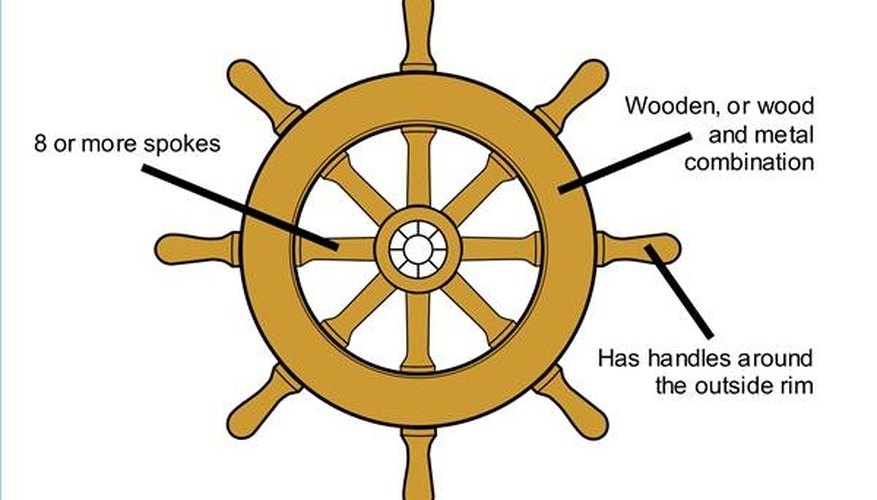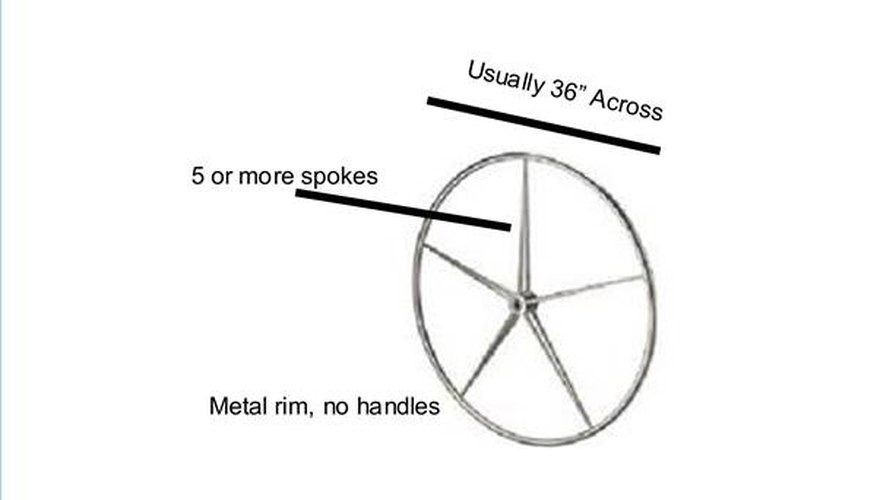The image of a ship's wheel, manned by a struggling seaman in heavy seas, is a powerful element in the minds of anyone who has ever read literature of the sea. Contrary to popular belief, the man struggling with the wheel is not the captain. The captain does not steer the ship himself, nor is he always on the bridge; he might take the wheel during specific events, but with the evolution of shipping, the captain's job has evolved as well. Nor has the ship's wheel remained the huge wooden monstrosity it was. Understanding its changing design over the years will help the collector of maritime artifacts determine its age and place it in its proper historical context.

The traditional ship's wheel.
Look around the rim of the wheel. Older ship's wheels were wooden, usually had eight spokes and had handles around its circumference that were used for additional leverage in the days before hydraulic steering systems.

The destroyer wheel.
Notice the wheel's general shape and the material the wheel is made from. The "destroyer wheel" evolved between World War I and World War II as navies of the world began to demand smaller, more maneuverable, defensive vessels. Round, usually stainless steel or aluminum, the destroyer wheel has five or more spokes, a slim handle, might be as much as 36 inches in diameter and has no handles around the outside of its rim.

The modern helm.
Ask yourself, "Does this wheel look out of place anywhere?" If your answer is yes, then the wheel is probably from a modern ship's helm. The newest incarnation of the ship's wheel is small, padded and not quite round, since it does not have a full rim. The "missing" section gives the helmsman a visual indicator of what the rudder's position is: The wheel only turns through an arc of 270 degrees, not even 1 full rotation. When the missing section is at the top, the rudder is centered and the ship moves straight ahead.
Tips
- Look for a brass plate on the hub of the wheel. Some ship's wheels, particularly old wooden wheels, might be marked with a small brass plate with the name of the vessel they were first installed upon, or the name of the chandler who sold the wheel.
Tips
- Look for a brass plate on the hub of the wheel. Some ship's wheels, particularly old wooden wheels, might be marked with a small brass plate with the name of the vessel they were first installed upon, or the name of the chandler who sold the wheel.
Writer Bio
Will Charpentier is a writer who specializes in boating and maritime subjects. A retired ship captain, Charpentier holds a doctorate in applied ocean science and engineering. He is also a certified marine technician and the author of a popular text on writing local history.



